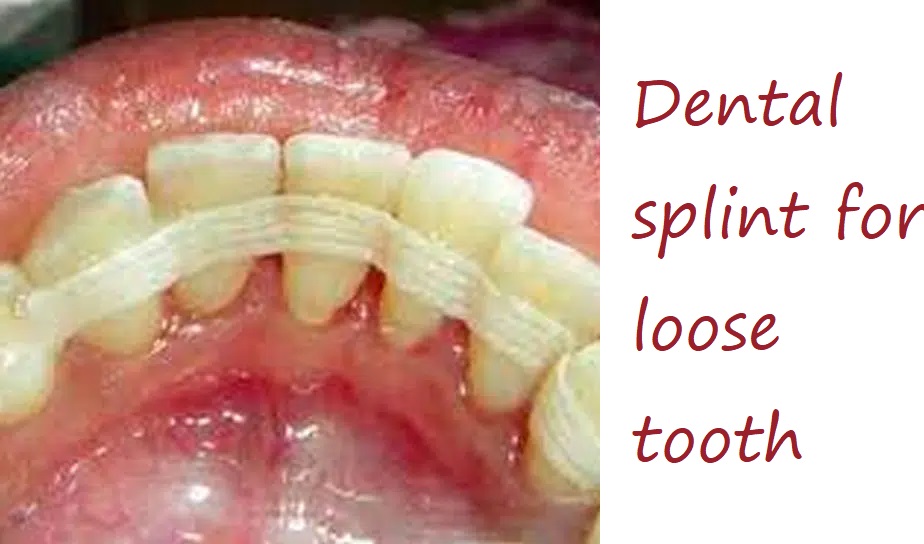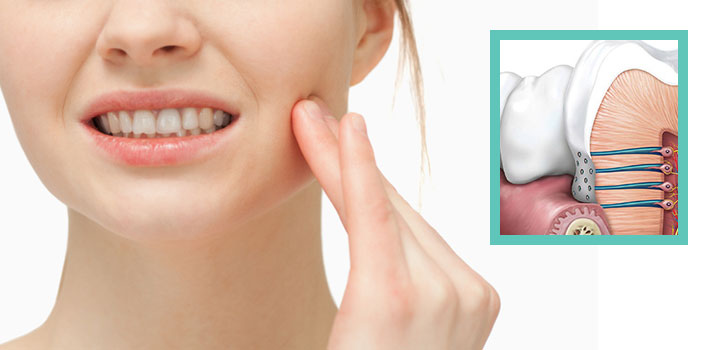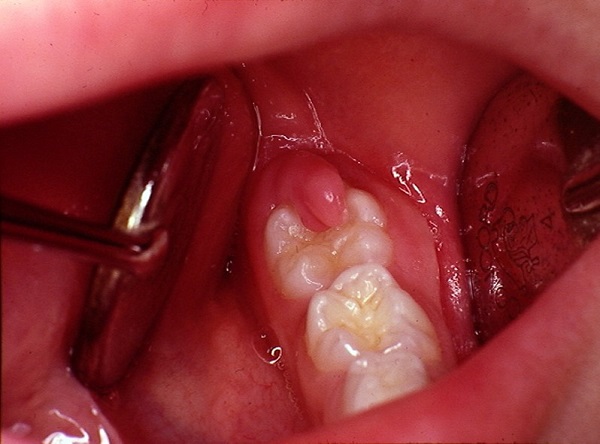Dental splint for loose tooth

A loose tooth can be a cause for concern, whether it results from trauma, periodontal disease, or other dental issues. One effective treatment option for stabilizing a loose tooth is the use of a dental splint. This comprehensive guide will explore the causes of loose teeth, the different types of dental splints, the procedure for fitting them, and their benefits and potential risks. By understanding how a dental splint for loose tooth works, you can make informed decisions about your dental health.
Understanding Loose Teeth
A tooth is considered loose when it moves slightly or feels unstable. This can happen due to various reasons, and addressing the underlying cause is crucial for effective treatment.
Causes of Loose Teeth
- Trauma: Physical injury to the mouth can result in one or more loose teeth.
- Periodontal Disease: Advanced gum disease can weaken the structures supporting the teeth, leading to looseness.
- Bruxism: Habitual grinding or clenching of teeth can cause them to become loose over time.
- Orthodontic Treatment: In some cases, orthodontic adjustments can temporarily loosen teeth.
- Osteoporosis: This condition can affect the jawbone, making teeth more prone to becoming loose.
- Pregnancy: Hormonal changes during pregnancy can affect the ligaments and bones in the mouth, causing teeth to loosen.
What is a Dental Splint?
A dental splint is a device used to stabilize loose teeth, providing support and preventing further movement. Dental splints can be temporary or permanent and are typically made from materials like metal or composite resin.
Types of Dental Splints
- Temporary Splints: Often used in cases of dental trauma, these splints are designed to be worn for a short period until the tooth stabilizes.
- Permanent Splints: Used for more severe cases, these splints are intended for long-term stabilization of loose teeth.
- Occlusal Splints: These splints are designed to address issues like bruxism by preventing teeth grinding and clenching.
- Fiber-Reinforced Splints: Made from high-strength fibers, these splints are flexible and can be used for both temporary and permanent stabilization.
The Procedure for Fitting a Dental Splint
Fitting a dental splint for a loose tooth involves several steps, from initial consultation to final adjustments. Here’s a detailed look at the process:
Initial Consultation and Assessment
- Dental Examination: A thorough examination to determine the extent of the tooth looseness and identify any underlying issues.
- X-rays: To assess the condition of the jawbone and surrounding structures.
- Discussion of Options: The dentist will explain the types of splints available and recommend the best option based on the specific case.
Preparing the Tooth
- Cleaning: The affected tooth and surrounding area are cleaned to remove any debris or plaque.
- Isolation: The tooth is isolated using dental tools to keep the area dry during the procedure.
Applying the Splint
- Selecting the Splint: The dentist selects the appropriate type and material for the splint.
- Attachment: The splint is attached to the loose tooth and adjacent stable teeth using dental adhesive.
- Adjustments: The dentist makes any necessary adjustments to ensure the splint fits comfortably and securely.
Post-Procedure Care
- Instructions: The dentist provides instructions on how to care for the splint and maintain oral hygiene.
- Follow-Up Appointments: Regular check-ups to monitor the stability of the tooth and the effectiveness of the splint.
Benefits of Using a Dental Splint for Loose Tooth
Using a dental splint for a loose tooth offers several advantages, contributing to overall dental health and functionality.
Stabilization and Healing
- Immediate Stability: Provides immediate support to the loose tooth, reducing movement and discomfort.
- Healing Promotion: Allows the periodontal ligaments and surrounding tissues to heal by minimizing stress on the loose tooth.
Improved Functionality
- Enhanced Chewing: Restores the ability to chew properly without discomfort or fear of further loosening the tooth.
- Speech Improvement: Stabilizing a loose tooth can improve speech clarity affected by tooth movement.
Aesthetic Benefits
- Improved Appearance: A dental splint can restore a more natural look to the teeth, enhancing overall appearance.
- Confidence Boost: Knowing that your teeth are stable can improve self-confidence and reduce anxiety about eating or speaking in public.
Potential Risks and Complications
While dental splints are generally safe and effective, there are potential risks and complications to consider.
Tooth Decay and Gum Disease
- Plaque Accumulation: Splints can make it harder to clean around the affected teeth, increasing the risk of plaque buildup and tooth decay.
- Gum Irritation: The presence of a splint can cause gum irritation if not properly maintained.
Tooth Sensitivity
- Temporary Sensitivity: Some patients may experience temporary sensitivity after the splint is applied.
- Long-Term Sensitivity: Prolonged use of a splint can sometimes lead to increased tooth sensitivity.
Splint Failure
- Material Wear: Over time, the materials used in the splint may wear down, requiring replacement.
- Detachment: In some cases, the splint may detach from the tooth, necessitating reapplication.
Alternatives to Dental Splints
In some cases, alternatives to dental splints may be more appropriate for stabilizing a loose tooth.
Periodontal Treatment
- Deep Cleaning: Scaling and root planing to remove plaque and tartar from below the gum line.
- Gum Surgery: Procedures to reshape or graft gum tissue to improve support for loose teeth.
Orthodontic Treatment
- Braces: In some cases, braces can be used to reposition and stabilize loose teeth.
- Invisalign: Clear aligners that can provide gentle stabilization for loose teeth.
Tooth Extraction and Replacement
- Extraction: In severe cases, extracting the loose tooth may be the best option.
- Dental Implants: Replacing the extracted tooth with a dental implant for permanent stability.
- Bridges and Dentures: Other prosthetic options to replace missing teeth and restore function.
Caring for Your Dental Splint
Proper care and maintenance of your dental splint are crucial for ensuring its effectiveness and longevity.
Daily Oral Hygiene
- Brushing: Brush twice daily using a soft-bristled toothbrush to clean around the splint.
- Flossing: Use floss threaders or interdental brushes to clean between teeth and around the splint.
- Mouthwash: Rinse with an antimicrobial mouthwash to reduce plaque and bacteria.
Regular Dental Check-Ups
- Professional Cleanings: Regular dental cleanings to remove plaque and tartar buildup.
- Monitoring: Regular check-ups to monitor the stability of the splint and the health of the teeth and gums.
Avoiding Hard Foods
- Dietary Adjustments: Avoid hard, crunchy, or sticky foods that could damage the splint or loosen the adhesive.
- Chewing Habits: Chew on the opposite side of the mouth to minimize stress on the splinted tooth.
Long-Term Outlook with Dental Splints
The long-term outlook for patients using a dental splint for a loose tooth is generally positive, especially with proper care and maintenance.
Preventing Further Tooth Loss
- Early Intervention: Addressing loose teeth early with a dental splint can prevent further tooth loss and more invasive treatments.
- Maintaining Oral Health: Ongoing dental care and good oral hygiene practices are essential for long-term success.
Enhancing Quality of Life
- Functional Improvement: Stabilizing loose teeth can improve chewing, speaking, and overall dental function.
- Aesthetic Enhancement: A stable and healthy smile can boost confidence and improve social interactions.
Innovations in Dental Splinting
Advances in dental technology continue to improve the materials and techniques used for dental splinting, offering better outcomes for patients.
High-Strength Materials
- Fiber-Reinforced Composites: New materials that offer increased strength and flexibility for both temporary and permanent splints.
- Biocompatible Materials: Advances in biocompatible materials reduce the risk of allergic reactions and improve patient comfort.
Minimally Invasive Techniques
- Adhesive Technology: Improved adhesives that provide stronger bonds with less tooth preparation.
- Digital Imaging: Use of digital imaging to create more precise and customized splints.
Conclusion
A dental splint for a loose tooth can be an effective solution to stabilize and protect teeth affected by trauma, periodontal disease, or other dental issues. By understanding the types of dental splints, the fitting process, benefits, potential risks, and proper care, you can make informed decisions about your dental health. Regular dental check-ups, good oral hygiene practices, and following your dentist’s advice are essential for maintaining the stability and health of your teeth.
Frequently Asked Questions (FAQs)
1. What is a dental splint for a loose tooth?
A dental splint is a device used to stabilize loose teeth, providing support and preventing further movement. It can be temporary or permanent and is typically made from materials like metal or composite resin.
2. How long does a dental splint need to stay on a loose tooth?
The duration a dental splint needs to stay on a loose tooth varies depending on the severity of the looseness and the underlying cause. Temporary splints may be worn for a few weeks to months, while permanent splints are intended for long-term stabilization.
3. Can a dental splint fix a loose tooth permanently?
A dental splint can provide long-term stabilization for a loose tooth, but addressing the underlying cause is crucial for permanent results. Regular dental care and good oral hygiene practices are essential for maintaining the stability of the splinted tooth.
4. Is the dental splint procedure painful?
The procedure for fitting a dental splint is generally not painful. Local anesthesia may be used to ensure comfort during the process. Some patients may experience mild discomfort or sensitivity afterward, but this is typically temporary.
5. What are the risks of using a dental splint for a loose tooth?
Potential risks include tooth decay and gum disease due to difficulty cleaning around the splint, temporary or long-term tooth sensitivity, and the possibility of the splint detaching or wearing down over time.
Final Thoughts
Using a dental splint for a loose tooth can significantly improve dental stability, functionality, and aesthetics. By working closely with a skilled dentist and following proper care guidelines, you can achieve and maintain a healthy, stable smile. If you have any concerns or questions about the dental splint process, don’t hesitate to reach out to your dental professional for personalized advice and support.
Related to read:
Best Oral Hygiene Practices For Optimum Oral Health.
How to Whiten Teeth Naturally?
How to keep your gums healthy and disease-free?
References
To ensure the information provided is accurate and up-to-date, the following sources were referenced:
- American Dental Association. (n.d.). Plaque and Tartar. Retrieved from ADA website
- Mayo Clinic. (n.d.). Dental Plaque. Retrieved from Mayo Clinic website
- National Institute of Dental and Craniofacial Research. (n.d.). Periodontal (Gum) Disease. Retrieved from NIDCR website
This comprehensive guide provides a detailed overview of using a dental splint for a loose tooth, offering valuable information to help individuals make informed decisions about their dental care. Whether you’re considering a splint for trauma, periodontal disease, or other causes, understanding the process and potential outcomes is crucial for achieving the best results.









